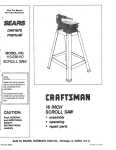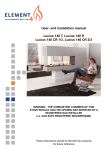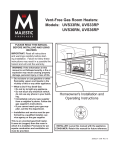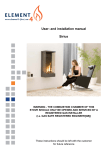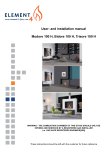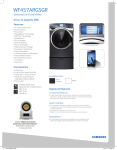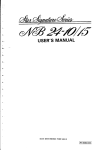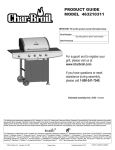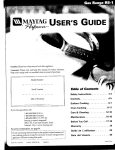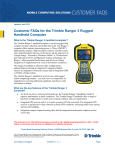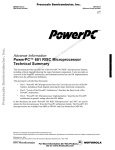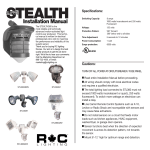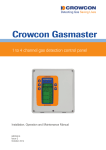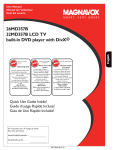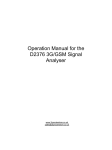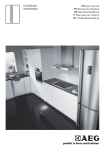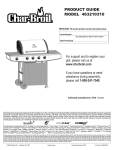Download Trisore 70, Bidore 70, Modore 70. User
Transcript
Gebruikers- en installatie handleiding (NL/BE) User- and installation manual Trisore 140, Bidore 140, Modore 140, Trisore 140, Modore Trisore 95,Bidore Bidore140, 95, Modore 95,140, Trisore Modore70. 95, Trisore95, 70,Bidore Bidore 95, 70, Modore Trisore 70, Bidore 70, Modore 70. WARNING - THE COMBUSTION CHAMBER OF THIS STOVE SHOULD ONLY BE OPENED AND SERVICED BY A REGISTERED GAS INSTALLER (i.e. GAS SAFE REGISTERED ENGINEER[GB]) Let op: de verbrandingskamer van deze gashaard mag uitsluitend worden geopend en onderhouden door een bekwaam gasinstallateur Laat deze instructies als handleiding achter bij het toestel These instructions should be left with the customer for future reference This Manual Covers the following appliances: Trisore 140, Bidore 140, Modore 140, Trisore 95, Bidore 95, Modore 95, Trisore 70, Bidore 70, Modore 70. Contents GENERAL INFORMATION............................................................................................................3 Important Safety Notice..................................................................................................................3 General Fitting Information....................................................................................................4 USER INFORMATION...................................................................................................................5 Remote Control Electronic Ignition System RCE GV60................................................................5 INSTALLER INFORMATION.......................................................................................................10 Ventilation............................................................................................................................10 General Balanced Flue Notes / Appliance Fireplace installation.........................................10 Terminal Locations Wall Mounting.......................................................................................12 Terminal Locations Roof Termination...................................................................................13 Concentric Flue Parts Identification.....................................................................................14 Rigid Balanced Flue Connection Possibilities......................................................................21 Wall Terminal Terminations..................................................................................................21 Vertical Roof Terminations...................................................................................................22 Installing Remote Control Electronic Ignition System GV60........................................................25 Arranging The Ceramic Fire-bed..................................................................................................26 Log Arrangements...............................................................................................................26 Gravel Arrangements...................................................................................................................31 COMMISSIONING THE APPLIANCE..........................................................................................31 Installing the fire ........................................................................................................................32 Servicing Instructions...................................................................................................................34 Troubleshooting............................................................................................................................35 TECHNICAL INFORMATION.......................................................................................................37 Dimensions...................................................................................................................................37 Technical Details..........................................................................................................................42 Warranty.......................................................................................................................................46 2 GENERAL INFORMATION Important Safety Notice ing regulations. It is therefore recommend that a registered gas installer be employed for this task. The engineer will provide you with information about the safety limits of the installation and should fix a notice plate in a place where it can be readily seen. This appliance has a ceramic Fire-bed arrangement; this contains Refractory Ceramic Fibres, which are man-made vitreous silicate fibres. Excessive exposure to these materials can cause irritation to eyes, skin and respiratory organs. Hence we recommend that when handling these materials the release of dust should be kept to a minimum. During installation and servicing we recommend that a HEPA filtered vacuum be used to remove any dust and soot in and around the fire. If any of the ceramic fire-bed components need to be replaced we recommend that the removed parts be sealed in a heavy-duty polythene bag, and be labelled as RCF waste. RCF is not “Hazardous waste” and can be disposed of at a licensed tipping site for the disposal of industrial waste. This appliance is designed as an efficient heating device and consequently all body parts become very hot in use. Except for the control knob and control access door, which are designed to stay cool, all other parts are working surfaces and should not be touched. The glass and frame on this appliance acts as a fireguard conforming to BS: 1945 – 1971 and satisfies the Heating Appliance (Fireguards) regulations 1991. No part of the window or frame should be permanently removed. It does not give protection for young children aged or infirm, extra guarding(conforming to BS8423: 2002) should be considered so the special hazards that exist in nurseries and other places where there are young children, aged or infirm persons are minimized. The appliance incorporates a permanent pilot. This is located on the front of the burner, and must not be adjusted by the installer. This system must not be put out of operation, and if any parts require changing, only original manufacturer parts shall be used. Bearing in mind that the heat given off by this appliance may affect articles placed close to it, curtains should not be placed within 30cm. This appliance is designed to be used either Natural or LPG gas however, each individual appliance is only capable of running off the type of gas specified at the time of purchase. It is important to note that once a type of gas has been specified the stove cannot run off any other type. The type of gas that your stove is capable of burning is stated on the data information panel. The appliance is not designed as a dryer. It is not therefore recommended that the appliance be used in such a manner. Do not place any articles within 30cm of this appliance as this may result in damage to the articles. The installation must be carried out in accordance with the following regulations: This appliance has been designed, tested and approved to meet standards in place for product use, performance and safety. Installation of your appliance must comply with current build- The Building Regulations issued by the Depart 3 GENERAL INFORMATION General Fitting Information ment of the Environment, the Building Standards (Scotland) (Consolidation) Regulations issued by the Scottish Development Department. Inlet pipe connection 8mm compression Chimney requirements Balanced Flue Flue monitor Permanent Pilot BS 5440 part 1, BS 5871 part 2 and BS 6891. User control: Variable rotary control inc. integrated Piezo ignition, Permanent pilot facility, Flame failure device and Oxygen Depletion Cut-out. In the Republic of Ireland the installation must also conform to the relevant standards, particularly in regard to flue sizing and ventilation. Refer to documents IS813, ICP3, IS327 and any other rules in force. Before installation of these appliances, the area into which the fire is to be fitted must be cleared of all debris (including dust), in particular combustible material. This appliance must be installed in accordance with the rules in force and used only in a sufficiently ventilated space, and is intended for use on a gas installation with a governed meter. The appliance must sit on a hearth (or base surface) sufficient to support the weight of the fire. The firebox must then also be secured. Adjustable brackets are supplied on the firebox for this purpose. Before installation, ensure that the local distribution conditions (identification of the type of gas and pressure) and the adjustment of the appliance are compatible. The technical specification of this appliance is given on the rear page of this manual. Prevention of rust: Always switch the Fire completely off after use. This saves gas and prevents corroding of your fire. Do not use the appliance if the glass front door or panel has been broken, removed or is open. Note: Since the appliance is a source of heat, circulation of air occurs. Therefore it is of importance that you do not use the appliance shortly after a renovation of the home. Because of the natural circulation of air, moist and volatile components from paint, building materials, carpet etc. will be attracted. These components can settle themselves down onto cold surfaces in the form of soot. 4 USER INFORMATION USER INFORMATION - temperature display display in degrees Celsius Celsius or - temperature in degrees or Remote control ignitionsysRemote controlelectronic electronic ignition Fahrenheit; Fahrenheit; system RCEGV60 GV60 tem RCE - time; - time; - thermostat function;function; - thermostat TheThe appliance is supplied with with a remote control. appliance is supplied a remote control. - timer for thermostat function.function. - timer for thermostat Ignition, controlling the flame height and switchIgnition, controlling the flame height and switching off by the control that that ingare off performed are performed byremote the remote control SettingSetting the communication code code the communication operates a receiver ininthe hatch.For Forsome operates a receiver thecontrol control hatch. Prior toPrior putting the application into operation, a to putting the application into operation, a some appliances, control hatch supplied. appliances, nono control hatch is is supplied. In that code must set be between the communication codebe must set between the In that case, the receiver is placed the communication case, the receiver is placed underunder the appliance. remote remote control and theand receiver. The code is code cho- is chocontrol the receiver. The appliance. The receiver and control remote are control arepowThe receiver and remote battery sen randomly from the 65000 available codes. sen randomly from the 65000 available codes. As battery powered. The receiver 4 ered. The receiver requiresrequires 4 As a result, the chance that other controlscontrols a result, the chance that remote other remote penlite (AA(AA type) batteries, thethe remote penlite type) batteries, remotecontrol control renear you areyou using same affect near arethe using thecode sameand code andthe affect the requires penlites At Atnormal normaluse, use, quires33xx AAA penlites thethe batteroperation of your appliance is very small. operation of your appliance is very small. batteries have average of one year. ies willwill have an an average life life of one year. You can Youalso can use also an useoptional an optional adapter. adapter. Ask Ask youryour installer Follow the procedure described below: below: Follow the procedure described installer for information. thatyou case willa 230 for information. In thatIncase willyou need reset on the on receiver, Hold the down thebutton reset button the receiver, need 230 V connection near your appliance. Hold down Va connection near your appliance. until you hear two consecutive sound sound signalssignals until you hear two consecutive (see fig.(see 2). After the second, longer longer signal,signal, let fig. 2). After the second, let go of the goreset of thebutton. reset button. Press button Press button on the remote controlcontrol within 20 seconds, until until on the remote within 20 seconds, you hear a sound signal:signal: this is the you hear a sound thisconfirmais the confirmation of a correct communication. tion of a correct communication. !Caution When installing a new remote controlcontrol !Caution When installing a new remote or receiver, you must a new communicaor receiver, youset must set a new communication code. tion code. 11 TheThe appliance’s standard functions such as as appliance’s standard functions such ignition, controlling the the flame ignition, controlling flame height, standby (pilot burner) position andand height, standby (pilot burner) position switching off are performed in the switching off are performed in the MAN position, the the manual control of the MAN position, manual control of the remote remote control fig. 1). control (see(see fig. 1). In addition, the the remote control cancan alsoalso be be used In addition, remote control used a number additional toto setset a number ofof additional functions: functions: 5 2 22 5 USER INFORMATION USER INFORMATION USER INFORMATION MAN position Ignite the appliance as follows; e s a s f o lfl oo lwl osw; s ; MAN position position MAN I g n iI tgen i tteh e t haep palpi ap nl icaen c a By briefly pressing the SET button, you will go By briefly briefly pressing pressingthe theSET SETbutton, button,you youwill willgogo By through the following functions: through the the following following functions: functions: through MAN → TEMP → TEMP → (P*)TIMER MAN → TEMP MAN TEMP → → TEMP TEMP→ →(P*)TIMER (P*)TIMER→ → MAN MAN → MAN where, depending on the timer setting: where, depending depending on on the the timer timer setting: setting: where, (P*) is displayed as P1 , , P1 , P2 , (P*) is is displayed displayed as asP1 P1 , , , ,P1 P1 , P2 , P2 (P*) , , P2 . P2 P2 .. Simultaneously press the buttons and Simultaneously press buttons Simultaneously press thethe buttons andand You can also go back to the MAN position by You can canalso alsogo goback backtotothe theMAN MANposition positionbyby You pressing the button or pressing the the button button or pressing or on the remote control. on remote the remote control. on the control. Let go of the buttons when a short sound signal Letofgothe of the buttons when a shortsound soundsignal signal inLet go buttons when a short !Caution - When pressing the buttons indicates that the ignition process has been dicatesthat that the the ignition process has has beenbeen started. !Caution - When pressing the buttons (with the indicates !Caution - When pressing the buttons ignition process (with the exception of the SET button), the started. In succession: exception of the SETofbutton), thebutton), transmission (with the exception the SET the started. transmission symbol ( ) will appear to In succession: - the continuous signals will indicate that the ignisymbol ( ) will appear transmission symbol ( ) to willindicate appear that to In succession: indicate that transmission is taking place - the continuous signals will indicate that the ignition processsignals is active; transmission taking place between the place remote - the tion indicate thatistransmission is taking continuous will indicate that the ignition between the remote control and the receiver; process is active; - a short sound signal will indicate that the ignition control and receiver; between thethe remote control and the receiver; process is active; - The receiver acknowledges the transmission - a short sound signal will indicate that the ignition process hassignal finished; Thereceiver receiveracknowledges acknowledgesthe the transmission - a short --The transmission sound will indicate that the ignition with a sound signal; process has finished; - thehas appliance will automatically switch through with a sound with soundsignal; signal; process finished; - The appliance will automatically enter the - the appliance will automatically switch through to the highest of theswitch main burner, Theappliance appliancewill willautomatically automaticallyenter enterthe the - theto -- The appliance will position automatically throughwhich to standby position, if there is no transmission the highest position of the main burner, which will will startposition to burnof in the a few seconds. standby position, standby position,ififthere thereisisno no transmission transmissionfor the highest main burner, which will for 6 hours. start to burn in a few seconds. 6 hours. for 6 hours. start to burn in a few seconds. Caution - If the pilot burner is not burning after Set the remote control to the MAN position. Caution - If the pilot burner is not burning after 3 ignition you close the Set the the remote MAN position. Set remote control controltotothe the MAN position. Caution - If theattempts, pilot burner is must not burning aftergas 3 ignition attempts, you must close the gas tap tap and call the you installer; 3 ignition attempts, must close the gas tap Ignition and call the installer; When the pilot burner, you will hear Ignition Ignition and -call the igniting installer; Caution - During the ignition process, you - When igniting the pilot burner, you will hear sound signals. last short sound Caution - During you are - When Caution Duringthe theignition ignitionprocess, process, you igniting theAfter pilot the burner, you will hearsigare not allowed to operate control button B sound signals. After the last short sound signal, nal, the main burner should largely ignited not not allowed to operate control button B B sound are allowed to operate control button signals. After the last shortbe sound signal, on the gas control manually the main burner should be largely ignited within within about 10 seconds. this iswithin not the on the the gas gas control control manually manually on the main burner should be largelyIfignited - Always wait 5 minutes after the pilot burner about 10 seconds. If this is not the case, you case, you mustIfclose andyou warn Alwayswait wait55minutes minutesafter afterthe thepilot pilotburner burner about --Always 10 seconds. this isthe notgas thetap case, has gone out, before you re-ignite must close the gas tap and warn your installer; installer; has gone gone out, out, before before you you re-ignite re-ignite has mustyour close the gas tap and warn your installer; the appliance; - If the appliance ignites with a pop sound, you - If appliance the appliance ignites a pop sound, the appliance; appliance; the - If the ignites withwith a pop sound, youyou must close the gas tap and close the gas tap and mustmust close the gas tap and contact your installer. contact installer. contact youryour installer. ✹ ✹ 3 3 B ✹ A A !Tip A little motor will start to run when the main !Tip A motor little motor willtostart to run when !Tip A little will start run when the mainthe burner operates, you will be able to hear it. main burner operates, you willtobehear ableit.to hear burner operates, you will be able it. B 6 6 6 USER INFORMATION Time The display can indicate time. After placing the battery or simultaneously press(large flame) and ing Flame height / standby The flame height can be adjusted continuously by using the buttons and By continuing to lower the flame height, the appliance can be set to the standby position; this means that only the pilot burner will still be burning. Press button (small flame) to lower the flame height and/or to set the appliance in the standby position. Press the button (large flame) to raise the flame height and/or to switch on the main burner from the standby (pilot burner) position. (small flame), the time indication will flash on the display and you will be able to adjust the time. Simultaneously press and until the time indication flashes on the display. Press the button (large flame) to set the hours. Press the button minutes. Caution - If you continue to press down button (large flame) on the remote control, the main burner should be largely ignited within about 10 seconds. If this is not the case, you must close the gas tap and warn your installer; - If the appliance ignites with a pop sound, you must close the gas tap and contact your installer. (small flame) to set the Press OFF to return to the MAN position, or wait for the system to automatically return to the MAN position. Thermostat function Using the thermostat function you can set two temperatures, which can be controlled thermostatically. These temperatures are referred to as day temperature and night temperature. The TEMP and TEMP symbols on the display refer to day and night temperature respectively. The room temperature is compared to the set day/night temperature and then the flame height is automatically controlled in order to reach the set temperature.To be able to use the day/night temperature function, the appliance must be in the standby position. ✹ Switching off Switch the appliance off by pressing the OFF button. The pilot burner will also go out. Temperature display The room temperature can be indicated on the display in degrees Celsius (°C) using a 24 hour clock or degrees Fahrenheit (°F) using a 12 hour clock. Simultaneously press OFF and (small flame) , until the correct display appears. !Caution - Always leave the remote control at the same place, so that the thermostat is able to ‘feel’ the room temperature; - Make sure this place is free from influences such as draught, heat from radiators and direct sunlight. 7 USER INFORMATION Example By using the Y TEMP function you can keep the day temperature at 20 °C; while you use the 4 TEMP function at night to maintain a temperature of 15 °C. Timer for thermostat function Using the timer enables you to set two times per 24 hours for switching on the day temperature and two times per 24 hours for switching on the night temperature. In order to control the night temperature, it should be set to at least 5 °C / 40 °F. If the night temperature is set to the “-- ” position, the appliance will remain in the standby position. The appliance will only switch on at the next switch-on time of the day temperature. The appliance must be in standby position in order to be controlled by the timer. Setting day/night temperature By using the SET button, you will go through the following functions: MAN → TEMP → TEMP → (P*)TIMER → MAN Briefly press the SET button to enter the TEMP or the TEMP position. Press the SET button until the temperature on the display flashes. Set the required temperature by using the buttons and Example of switch times You have set a day temperature and night temperature of, for example, 20 °C and 15 °C. P1 TIMER = 7 hours; the temperature will go to 20 °C at 7 am. P1 TIMER = 9 hours; the temperature will go to 15 °C at 9 am. P2 TIMER = 17 hours; the temperature will go to 20 °C at 5 pm. P2 TIMER = 22 hours; the temperature returns to 15 °C at 10 pm. ✹ !Caution - The minimum temperature you can set is 5 °C / 40 °F; - Control of the night temperature is switched off by lowering the temperature until two stripes (“--”) appear on the display. Press the OFF button or wait until position TEMP or TEMP appears on the display. ✹ ✹ Activating the thermostat function For activating the thermostat function, you must proceed with the following steps: Place the appliance in the standby (pilot burner) position using button (small flame). Set the day/night temperature. ✹ Choose the TEMP or the SET button. TEMP function using 8 USER INFORMATION Replacing the battery If the battery is almost empty, the display will show “BATT”. Setting times for the timer To set the timer, proceed as follows: Set the day and night temperature as described above Briefly press the SET button to enter the (P*) TIMER position. Press the SET button until P1 TIMER is displayed and the time flashes. Set the first switch on time of the day temperature To replace the battery, proceed as follows: Remove the cover at the back side of the remote control. Disconnect the 3 x AAA penlites from the connector. using the buttons large flame) and (small flame) . Briefly press the SET button to set the next time TIMER. of the cycle, P1 !Caution - Observe the “+” and “-” poles of the batteries and the connector; - Use alkaline batteries; - Batteries are regarded as “small chemical waste” and may therefore not be disposed with the household rubbish. ✹ TIMER Successively set the times P2 TIMER. and P2 Press the OFF button or wait until position (P*) TIMER appears on the display. Place the battery in the holder. Replace the cover. Activating the timer function Follow the steps below for activating the timer control: Place the appliance in the standby (pilot burner) (small flame). position using button Set the day/night temperature if you have not yet done so; Set the timer times P1 TIMER, P2 ✹ ✹ TIMER, P1 TIMER and P2 TIMER. Choose the (P*) TIMER function using the SET button. 9 INSTALLER INFORMATION InstallatIon the supplier, thus the appliance must only be installed with the original flue system, no others may be used Before beginning the installation, check that the details on the rating plate correspond to the gas type and pressure to which the appliance will be connected. The gas fire, in combination with the concentric flue system , has been approved in accordance with the European CE-norm for gas appliances and may therefore be used only with this system. The guarantee is invalidated if the appliance is (completely or partially) installed using a different system. Ventilation This appliance can be installed in a completely sealed or mechanically ventilated house without extra ventilation and/or fume extraction. The concentric flue systems can be used with either a newly-built or existing chimney. General Balanced Flue Notes These appliances are designed with the “Firebox” raised up off the ground level by the built in “Base unit”. There are many possibilities for installing this Concentric Balanced Flue system into a building, both Roof and Wall terminations are possible, and the flue can either be built into an existing chimney or a completely new flue system may be constructed. Thus these appliances require no special Hearth arrangements, as the floor will not get hot and is protected by the steel construction of the “Base unit”. The system is based upon a Concentric Flue system which utilises an inner flue of 100 or 130 mm diameter which passes through an outer flue of 150 or 200 mm diameter. The flue gasses that are the products of combustion of the fire, pass through the inner flue and are safely vented to the outside environment. The gap between the inner and outer flues is the channel by which the stove is supplied with air for combustion. The appliance must not be fitted against a rear wall constructed from a combustible material; a gap of 300mm should be given all round the stove before combustible materials may be used in the wall construction. If the appliance has to be located in an opening, a minimum clearance of 50mm should be allowed to non-combustible materials. These concentric flues terminate outside of the property in a terminal, this terminal will keep the expelled gasses and the fresh air for combustion separate. It is important that the terminal is not blocked, a suitable guard maybe required if the terminal is located at a “Low” level (usually when the terminal is within 2m of floor level). If the appliance is located in a recess, then the recess must have adequate ventilation, we recommend a minimum total vent area of 400 cm². The stove must be located at least 280mm from any combustible materials. Appliance Fireplace Installation The Balanced Flue gas appliance can be installed as an insertion into an existing or new fireplace. If an existing Flue or Chimney is to be utilised, then the installation engineer must be consulted. If the chimney has been previously used it must be professionally cleaned and certified as being sound and fit for use. After selecting the appliance location, install a gas connection for the appliance in approximately the desired location of the gas controls. The gas controls are already connected to the appliance. The controls need to be located in the control access box, so an appropriate position for the access box need to be determined. The European CE approval on this appliance is restricted to the Flue systems as specified by 10 INSTALLER INFORMATION This appliance has adjustable legs, these must me set to stabalise the fire before flue position is finalised. Note: A covered passageway should not be treated as a carport. Flues should not be sited in a covered passageway between properties. Do not make any adjustments to the appliance, except the leg length. Basements,Lightwells and Retaining walls The appliance and Flue system should be fitted with a minimum clearance of 500mm from any combustible objects or materials, this includes any combustible materials used for the fireplace construction. Flue terminals should not be sited within the confines of a basement area, light well or external space formed by a retaining wall, unless steps are taken to ensure the products of combustion can disperse safely at all times. It may be possible to install this Balanced Flue system in such a location provided that it is not sited lower than 1m from the top level of that area to allow combustion products to disperse safely. As this is a room sealed appliance and the appliance stands on appropriate legs, a hearth is not required for this appliance. The Fireplace should be ventilated with openings giving a total free vent area of 400 cm². Flue terminals should be sited to ensure total clearance of the combustion products in accordance with the inclosed information. A gap of 50mm should be left all round the appliance. When the products of combustion are discharged, they should not cause a nuisance to adjoining or adjacent properties and they should be positioned so that damage cannot occur to other parts of the building. If the outer wall surface is constructed of combustible material, a non-combustible plate should be fitted behind the terminal projecting 25mm beyond the external edges of the terminal. If a shelf is to be fitted above the fireplace opening, a gap of 150mm minimum should be left between the opening and the shelf. The brackets supplied may be used fore securing the appliance to a rear wall. Timber Frame Construction Whilst it is possible to install room-sealed appliances in timber frame properties, great care needs to be taken to ensure that the flue assembly does not interfere with the weather proofing qualities of any outer wall which it may penetrate. Before attempting this work, further details need to be referenced, (e.g. “Gas Installations in Timber Frame Buildings” from the CORGI installer series in the UK). Carport or Building Extension Where a flue terminal is sited within a carport or building extension, it should have at least two completely open and unobstructed sides. The distance between the lowest part of the roof and the top of the terminal should be at least 600mm. 11 INSTALLER INFORMATION Terminal Locations Wall Mounting INFORMATION INSTALLER Terminal Locations Wall Mounting Dimension Terminal Position Distance (mm) Dimension Terminal Position Distance (mm) A* Directly below an opening,air brick, opening window etc. 600 A* Directly below an opening,air brick, opening window etc. 600 B Above an opening,air brick, opening window etc. 300 B Above an opening,air brick, opening window etc. 300 C Adjacent to an opening,air brick, opening window etc. 400 C Adjacent to an opening,air brick, opening window etc. 400 D Below gutters, soil pipes or drain pipes 300 D Below gutters, soil pipes or drain pipes 300 E Below eaves 300 E Below eaves 300 F Below balconies of car port roof 600 F Below balconies of car port roof 600 G From a vertical drain pipe or soil pipe 300 G From a vertical drain pipe or soil pipe 300 H From an internal or external corner 600 H From an internal or external corner 600 I Above ground roof or balcony level 300 I Above ground roof or balcony level 300 J From a surface facing the terminal 600 J From a surface facing the terminal 600 K From a terminal facing the terminal 600 K From a terminal facing the terminal 600 L From an opening in the car port (e.g. door , window into the dwelling) 1200 L From an opening in the car port (e.g. door , window into the dwelling) 1200 M Vertically from a terminal on the same wall 1500 M Vertically from a terminal on the same wall 1500 N Horizontally from a terminal on the same wall 300 N Horizontally from a terminal on the same wall 300 P From a vertical structure on the roof 600 P From a vertical structure on the roof 600 Q Above intersection with roof 150 Q Above intersection with roof 150 * I addition, the terminal should not be nearer than 300mm to an opening in the building fabric formed for the purpose of accomodating a built in 12 element such as a window frame. INSTALLER INFORMATION Terminal Locations Roof Termination “Distance” = minimum distance required for positioning of the outlet to avoid adverse effects with respect to: A. A ventilation opening serving an occupied room, a toilet or a bathroom B. A heating air supply, when the supply flows through an occupied room. C. A window that can be opened and that is near an occupied room, a toilet or a bathroom. Distance: outlet - To avoid adverse effects (*) A,B or C At the same roof level >6 m (*) At a different roof level >3 m (*) (**) At a lower positioned wall >2 m (**) At a higher sloping surface >6 m (***) If the required distance cannot be achieved, the outlet position rules take precedence. (**) If the outlet is positioned at least 1 m higher than the intake supply opening, or a window that can be opened. (***) If the required distance cannot be achieved, the position of the outlet must be at least 1 m above the highest facade/roof. Important note for Roof Terminations (C31). When installing the appliance with a roof termination (classification C31), it is important to fit a flue restriction strip across the flue outlet inside the stove, see following notes. Minimum Vertical Length notes. Roof terminations may be installed from a minimum height 1.0 m this is shown on the pages that follow. 13 INSTALLER INFORMATION Concentric Flue Parts Identification The following pages identify the parts that may be used in the Balanced Flue installation of this appliance. The Item number in the table refers to the item number of the part in the Identification pages, this Item number is also the number that will be used to identify parts in the Installation suggestion diagrams. Item Description Part No. Ø100 A B C D E F G 1 2 3 4 5 6 7 8 9 10 11 12 13 14 15 16 Appliance Appliance Connector Flue Adaptor Chimney or Flue, Fully Gas Tight Ø150 minimum Chimney or Flue, Fully Gas Tight Ø160 minimum Stainless Steel Flexible Chimney Liner Ø100, AISI 316Ti Stainless Steel Flexible Chimney Liner Ø150, AISI 316Ti Concentric Flue Pipe 250mm Length Concentric Flue Pipe 500mm Length Concentric Flue Pipe 1m Length Locking Band Protection Band Concentric Flue Pipe Adjustable Length 50 - 300mm Vertical Terminal Horizontal Terminal (Excentric Exit) Ø100 Mounting Band Wall Band Adjustable Concentric Flue 90° Concentric Flue 45° Concentric Flue 15° Storm Collar Flat Roof Flashing (Aluminium) Flat Roof Flashing 18 19 20 21 22 23 24 25 Slope Roof Flashing 5° - 30° Slope Roof Flashing 20° - 45° Adjustable Roof Plate (Supplied as pair) Wall Cover Flue reducer Ø130 - Ø100 Horizontal Terminal (Excentric Exit) Ø130 Concentric Flue 90° with Inspection Cover Inspection Element US 25 100 US 50 100 US 100 100 USKB 100 USAB 100 USPP 100 USDVC2 100 USDHCE 100 USEB 100 USMB 100 USB 90 100 USB 45 100 USB 15 100 USSR 100 USDPAL 100 USDP 100 US 25 130 US 50 130 US 100 130 USKB 130 USAB 130 USPP 130 USDH 100 USLS 100 USCP 100 USMPG 100 USDH 130 USLS 130 USCP 130 USMPG 130 USVK 10 130 USDHC 130 USBI 130 USI 130 USBI 100 USI 100 14 Ø130 USEB 130 USMB 130 USB 90 130 USB 45 130 USB 15 130 USSR 130 USDPAL 130 USDP 130 INSTALLER INFORMATION INSTALLER INFORMATION 15 15 INSTALLERINFORMATION INFORMATION INSTALLER 16 16 INSTALLER INFORMATION INSTALLER INFORMATION 17 17 INSTALLER INSTALLER INFORMATION INFORMATION 18 18 INSTALLER INSTALLERINFORMATION INFORMATION 22 USVK 100 130 REDUCER Ø130 - Ø100 23 USDHC 130 HORIZONTAL TERMINALØ130 19 19 INSTALLER INFORMATION INFORMATION INSTALLER 24 USBI 100 130 Elbow 90° with inspection cover 25 USI 100 130 Inspection Element 2020 INSTALLER INFORMATION INSTALLER INFORMATION Rigid Balanced Flue Connection Possibilities Rigid Balanced Flue Connection Possibilities Horizontal Wall Termination Horizontal Wall Termination Bidore 70/ Trisore 70/ Modore 70 Trisore Concentric 70/ Bidore 70/200/130 Modore 70 Diameter Flue: Trisore 95/ Bidore 95/ Modore 95 Diameter Concentric Flue: 200/130 Bidore 70 and Trisore 70 can be installed with a 90 degree bend direct to the fire. Trisore vertical 70, Bidore 70 “V” andisModore 70 of can bedegree installed with 90 degree bend direct to the fire. Minimal height the height a 90 bend (20a cm) Minimal vertical height “V” is 0,5 meters (95-models) Maximum height “V” whilst using a wall terminal: 3 meter Maximum height “V” whilst using a wall terminal: 3 meter Horizontal possibilities: Horizontal possibilities: 0,5 meter vertical gives maximum horizontal 3 meter 0,5 meter meter vertical vertical gives gives maximum maximum horizontal horizontal 62 meters meter 1,0 1,0 meter vertical gives maximum horizontal 4 meter 1,5 meter vertical gives maximum horizontal 9 meter 1,5 meter vertical gives maximum horizontal 6 meter 2,0 meter 95 vertical gives95/ maximum horizontal 8 meter Modore /Bidore Trisore 95 Modore 140/ Bidore 140/ Trisore 140 Trisore Concentric 140/ Bidore 140/ Modore 140 Diameter Flue: 200/130 Diameter Concentric Minimal vertical heightFlue: “V” is200/130 0,5 meter Minimal vertical 0,5 meter Maximum verticalheight height“V” “V”iswhilst using a wall terminal: 3 meter Maximum vertical height “V” whilst using a wall terminal: 3 meter Horizontal possibilities Modore95/Bidore95/Trisore95: Horizontal possibilities Trisore 140/ Bidore2 140/ Modore 140: 0,5 meter vertical gives maximum horizontal meter 0,5 meter meter vertical vertical gives gives maximum maximum horizontal horizontal 0,5 meter 1,0 4 meter 1,0 meter meter vertical vertical gives gives maximum maximum horizontal horizontal 18 meter 2.0 meter 1,5 meter vertical gives maximum horizontal 1,5 meter 2,0 meter vertical givesModore140/Bidore140/Trisore140: maximum horizontal 2 meter Horizontal possibilities 3,0 meter vertical gives maximum horizontal horizontal 31,5 meter 0,5 meter vertical gives maximum meter 1,0 meter vertical gives maximum horizontal 3 meter 2.0 meter vertical gives maximum horizontal 6 meter 21 21 INSTALLER INFORMATION Vertical Roof Terminations When installing the appliance with a roof termination (classification 31) it is important to fit a flue restrictor across the flue outlet inside the fire. Roof terminations will need the 60 mm flue restrictors fitting. This is delivered with the fire. We recommend using flue reducer USVK to flue dimension 150/100 22 INSTALLERINFORMATION INFORMATION INSTALLER Vertical Roof Mounted Termination with Elbow for Rigid Concentric Flue Vertical Roof Mounted Termination with Elbow for Rigid Concentric Flue We recommend using flue reducer USVK to flue dimension 150/100. 23 23 INSTALLERINFORMATION INFORMATION INSTALLER Vertical VerticalRoof RoofMounted MountedTermination Terminationwith withAngled AngledElbow Elbowfor forRigid RigidConcentric ConcentricFlue Flue We recommend using flue reducer USVK to flue dimension 150/100. 24 24 INSTALLER INFORMATION Installing the controls Electronic Ignition System RCE GV60) This requires no external electrical power to operate. The receiver unit has only one lead. This lead has one single plug. This plug fits into the connector block on the front of the Gas Control unit, the orientation of this plug is important. Install the batteries into the receiver and the handset; these will be 4 x 1,5V AA alkaline and 3 x AAA alkaline respectively. Setting the electronics code: The receiver has to select the code of the handset, please follow the procedure: 1) Power up handset 2) Power up receiver (LED flashes) 3) Push “reset” button on receiver till long beep 4) Push “flame low” button on sender till short beep 5) Gas fire is now ready for ignition. See options in user part. The receiver unit can be hidden away under or behind the stove, ensure that the receiver is located in an area that has a temperature below 60ºC, and that the customer knows where the receiver is for future battery replacement. Check the system. 25 slots on the Burner Tube. The Pilot flame must be visible through the grate and the d. Make sure there is a 1 cm gap between the back log and the back wall of the fire. INSTALLER INFORMATION INSTALLER INFORMATION Log Arrangements - Trisore 95, Bidore 95 & Modore 95 Log Arrangements - Trisore 95, Bidore 95 & Modore 95 1 2 Only the ceramics supplied with this appliance are to be used. The ceramics must be laid only as shown Only the ceramics supplied with this appliance are to be used. The ceramics must be laid only as shown on this page. Replacement parts are available from your dealer, but should only be installed by a qualion this page. Replacement parts are available from your dealer, but should only be installed by a qualified fied installation engineer. installation engineer. Ensure thatthe thegrate grateis is sitting firmly in the base offire thebox, fire with box,the with theslot long slotcentre in theofcentre of the Ensure that sitting firmly in the base of the long in the the Grate Grate theslots centre slots on the Burner Tube. Themust Pilotbeflame be visible through aligningaligning with thewith centre on the Burner Tube. The Pilot flame visiblemust through the grate and thethe grate thePilot cut-out in the Pilot Shield. Make sure is a the 1 cm gap the back log and cut-outand in the Shield. Make sure there is a 1 cm gapthere between back logbetween and the back wall of the fire.the back wall of the fire. 3 5 1 42 3 4 6 5 6 7 8 7 8 Ensure thatthe number holesthe the Grate and Pilot area free of embers. of holes Grate and Pilot area are free ofare embers. Ensure in that aanumber ofofholes ininthe Grate and thethe Pilot area are free of embers. After placingthe theembers embersand andlogs according to figures sprinkle some ashes over the and logs After placing thethe figures sprinkle some ashes overthe the logs ers and logs according to logs theaccording figurestosprinkle some ashes over logs and and embers. embers. Finally checkthe thepilot pilotisisclear, clear,nonoembers embers have entered Pilot area Finally check have entered thethe Pilot area and the the cross crosslighting lightingisisgood goodbefore before the glass replaced. the glass is is replaced. t is clear, no embers have entered the Pilot area g is good before the glass is replaced. 26 26 s sitting firmly in the base of the fire box, with the long slot in the centre of the Grate e slots on the Burner Tube. The Pilot flame must be visible through the grate and the INSTALLER INFORMATION INFORMATION eld. Make sure there isINSTALLER a 1 cm gap between the back log and the back wall of the fire. LogArrangements Arrangements--Trisore Trisore70, 70,Bidore Bidore70, 70,Modore Modore70 70 Log Onlythe theceramics ceramicssupplied suppliedwith withthis thisappliance applianceare areto tobe beused. used.The Theceramics ceramicsmust mustbe belaid laidonly onlyas asshown shown Only onthis thispage. page.Replacement Replacementparts partsare areavailable availablefrom fromyour yourdealer, dealer,but butshould shouldonly onlybe beinstalled installedby byaaqualified qualified on installationengineer. engineer. installation 1 2 Ensure Ensurethat thatthe thegrate grateisissitting sittingfirmly firmlyininthe thebase baseof ofthe thefire firebox, box,with withthe thelong longslot slotininthe thecentre centreof ofthe theGrate Grate aligning aligningwith withthe thecentre centreslots slotson onthe theBurner BurnerTube. Tube.The ThePilot Pilotflame flamemust mustbe bevisible visiblethrough throughthe thegrate grateand andthe the cut-out cut-outininthe thePilot PilotShield. Shield.Make Makesure surethere thereisisaa11cm cmgap gapbetween betweenthe theback backlog logand andthe theback backwall wallof ofthe thefire. fire. 3 2 2 11 4 4 4 33 5 6 55 7 6 6 8 77 8 8 Ensure that a number of and holes the in thePilot Gratearea and the Pilot areaof are free of embers. r ofEnsure holesthat in athe Grate are free embers. number of holes in the Grate and the Pilot area are free of embers. After placing the embers and logs according to the figures sprinkle some ashes over the logs bersAfter andplacing logs the according tologs theaccording figures tosprinkle some ashes and embers and the figures sprinkle some over ashes the over logs the logs ot and embers. and embers. Finally check the pilot is clear, no embers have entered the Pilot area Finally check the pilot is clear, no embers have entered the Pilot area and the cross lighting is good before the glass is replaced. isand clear, no embers entered the Pilot area the cross lighting ishave good before the glass is replaced. g is good before the glass is replaced. 27 27 INSTALLER INSTALLERINFORMATION INFORMATION IMPORTANT IMPORTANT NOTICE NOTICE FOR FOR ALL ALL LOG LOG ARRANGEMENTS: ARRANGEMENTS: Ensure Ensure that that aa number number of of holes holes in in the the grate grate and and the the Pilot Pilot area area are are free free of of embers. embers. Finally Finally check check the the pilot pilot is is clear, clear, no no embers embers have have entered entered the the Pilot Pilot area area and and the the cross lighting is good before the glass is replaced. cross lighting is good before the glass is replaced. The The appliances appliances do do have have aa second second thermo thermo element. element. (Except (Except 70-series) 70-series) Also this area should be clear of any ceramic materials Also this area should be clear of any ceramic materials Make Make sure sure that that the the second second thermocouple thermocouple is is nicely nicely positioned positioned into into the the flames. flames. 28 28 INSTALLER INFORMATION INSTALLER INFORMATION Log Arrangements - Trisore 140, Bidore 140 Log set LSE412 Logthe Arrangements - Trisore Bidore 140 LogThe setceramics LSE412 Only ceramics supplied with this 140, appliance are to be used. must be laid only as shown Only ceramics suppliedparts withare thisavailable appliance areyour to bedealer, used. but Theshould ceramics be laid only shown on thisthe page. Replacement from onlymust be installed by a as qualified on this page. Replacement parts are available from your dealer, but should only be installed by a qualified installation engineer. installation engineer. Ensure that the grate is sitting firmly in the base of the fire box, with the long slot in the centre of the Grate Ensure with that the the centre grate isslots sitting in theTube. base The of the fireflame box, with slotthrough in the centre of the aligning on firmly the Burner Pilot mustthe belong visible the grate andGrate the aligning the centre onsure the Burner flamethe must be log visible grate and the cut-out in with the Pilot Shield.slots Make there isTube. a 1 cmThe gapPilot between back andthrough the backthe wall of the fire. cut-out in the Pilot Shield. Make sure there is a 1 cm gap between the back log and the back wall of the fire. 29 29 INSTALLER INFORMATION INSTALLER INFORMATION 30 30 Gravel Arrangements / Blackstones / Brilliants Commissioning the appliance A soundness test MUST be made before the INSTALLER INFORMATION Ensure that the Grate , is sitting firmly in the base of the fire box, with the long slot in the centre of the GrateArrangements aligning with the centre slots on the/ Gravel / Blackstones Burner Tube. The Pilot flame must be visible Brilliants throughthat thethe Grate , is sitting firmly in the base Ensure grate andbox, thewith cut-out in the Pilot Shield. of the fire the long slot in the centre of the installed stove is left with the customer. Commissioning the appliance Ensure that the fire is burning at full rate for a minimum of 5 minutes to warm flue. A soundness test MUST be the made before the installed stove is left with the customer. Grate aligning with the centre slots on the Burner If there are problems, the flue may require Scatter evenly the Gravel over the through top of the Tube. The Pilot flame must be visible the attention. Ensure that the fire is burning at full rate for a Grateand andthe Burner. Make some holes grate cut-out in thesure Pilotthat Shield. minimum of 5 minutes to warm the flue. of grate are still visible. Ensure that none of the The stove will produce an odour and/or smoke gravel evenly enters the the Gravel pilot enclosure. firstare fewproblems, hours of the use.flue Please Scatter over the top of the Grate for Ifthe there may ventilate require room. Also please note that during this initial and Burner. Make sure that some holes of grate the attention. are still visible. Ensure that none of the gravel burning period, a grey dust deposit will be formed on The the inside window, enters the pilot enclosure. stove of willthe produce anplease odour clean and/orthis smoke before leaving the hours appliance withPlease the customer. for the first few of use. ventilate the room. Also please note that during this initial burning period, a grey dust deposit will be formed on the inside of the window, please clean this before leaving the appliance with the customer. Gravel Arrangement TheGravel Gravel arrangement arrangement is The is now now complete, complete,HowHowever,itit is is important important to to check ever, check that that no no stones stones have entered entered the the pilot pilot area have area and and the the cross cross lightingis is good good before before the the glass lighting glass is is replaced. replaced. 31 31 PORTANT INSTALLATION TIPS FALSE CHIMNEY BREAST: The false chimney breast must always be constructed of an non-combustible material; INSTALLER INFORMATION Always ventilate the space above the appliance by means of grills or a comparable INSTALLATION TIPS alternative with a minimum air supply of 200 cm2; For theread finish, special stucco (min 100 C resistant) glass fibre wallpaper Please first use the general fitting information whichdegrees one can find on page 4 ofor this booklet. to prevent discoloration or cracks; IMPORTANT INSTALLATION CHIMNEY BREAST: The false chimney breast TIPS and FALSE its construction may not rest on the appliance. - The false chimney breast must always be constructed of an non-combustible material; Always use a lintel if the chimney breast is constructed of brickwork. These should not b Always ventilate the space above the appliance by means of grills or a comparable placedalternative directly on appliance. withthe a minimum air supply of 400 cm2; For the finish, special stucco (min 100 degrees resistant) or glass fibre wallpaper If- the appliance is use to be fitted against a wall with Ccombustible cladding, the cladding mu to prevent discoloration cracks; by the surround. be removed from the areaorcovered - The false chimney breast and its construction may not rest on the appliance. Always use a lintel if the chimney breast is constructed of brickwork. These should not be placed directly on the appliance. If the appliance is to be fitted against a wall with combustible cladding, the cladding must be removed from the area covered by the surround. fore building in the Fire, always check that the metal frame is screwed aight and not too tight to the firebox. Before building in the Fire, always check that the metal frame is screwed be able to take out the glass from the front when the fire is built-in, the window trims should straight and not too tight to the firebox. be removed. They need a some space which can be given by loosening the 4 bolts (as sho To be able to take out the glass from the front when the fire is built-in, the window trims should easure below) a bit. ily be removed. They need a some space which can be given by loosening the 4 bolts (as shown in picture below) a bit. 32 INSTALLER INFORMATION INSTALLER INFORMATION INSTALLER INFORMATION INSTALLER INFORMATION INSTALLATION OF GLASS WINDOW INSTALLATION OF THE THE GLASS WINDOW INSTALLATION THE GLASS WINDOW INSTALLATION OFOF THE GLASS WINDOW Remove the window trims left, right and bottom like shown in figure 1, 2, 3 Remove the window trimstrims left, right and bottom like shown in figure 2, 1, 3 2, Remove window trims right and bottom shown in1, figure 1, 3 2, 3 Remove thethe window left,left, right and bottom likelike shown in figure Figure 1 Figure Figure 1 1 Figure 2 Figure Figure 2 2 Figure 3 Figure Figure 3 3 Unscrew the crosshead screws and remove the metal clamps which hold the glass window in Unscrew the crosshead screws and remove the metal clamps which hold thehold glass window in in in Unscrew crosshead screws and remove metal clamps which glass window Unscrew thethe crosshead screws and remove thethe metal clamps which hold thethe glass window place (top and bottom glass window). See figure 4. placeplace (top and bottom glassglass window). See See figure 4. place (top and bottom glass window). See figure (top and bottom window). figure 4. 4. Figure 4 Figure 4 Figure Figure 4 4 Figure 5 Figure 5 5 5 Figure Figure Now remove the glass window by lifting the NowNow remove the glass window by lifting the Now remove glass window lifting remove thethe glass window by by lifting thethe glass and then bring it forward. See figure 5. glassglass and then bring it bring forward. See See figure 5. glass and then it forward. See figure and then bring it forward. figure 5. 5. When the glass window is placed back again, When the glass window is placed backback again, When glass window is placed back again, When thethe glass window is placed again, DON’T tighten the screws of the metal clamps DON’T tighten the screws of the clamps DON’T tighten screws of the metal clamps DON’T tighten thethe screws ofmetal the metal clamps too tight. too tight. tight. tootoo tight. This brings tension and might cause the glass This This brings tension and might cause the glass This brings tension and might cause glass brings tension and might cause thethe glass window to break. window to break. window to break. window to break. 33 3333 33 SERVICING INFORMATION SERVICING INFORMATION servicing instructions servicing instructions Troubleshooting Troubleshooting The following outlines only the minimum work that Thebefollowing outlines the minimum work should performed on anonly annual basis. This thatwork, should basis. service likebe anyperformed other workon on an theannual appliance, any other work on the mustThis onlyservice be donework, by a like qualified and competent appliance, done by a qualified and engineer who ismust Gasonly Safebe registered. engineer whoallisceramics. Gas Safe registered. Opencompetent the door and remove OpenGrate the door Remove fromand the remove firebox. all ceramics. Remove Remove any Grate debrisfrom fromthe thefirebox. top of the burner anycleaner debris and frombrush. the top of the burner usingRemove a vacuum using vacuum cleaner and brush. Inspect theaburner unit. Inspect the burner unit. Perform an ignition check. Perform an ignition check. Perform a flame failure check Perform flame failure check the burner. If There shouldabe no need to service There should be no then needthe to engineer service the burner. however this is required, should If however thispressure is required, then to theburner; engineer check the setting at inlet should pressure check the pressure the correct is setting shown at the rearatofinlet the to burner; the correct pressure is shown at the rear manual. of off the and manual. Brush replace ceramic arrangement as Brush off and replace ceramicany arrangement earlier in this manual, replacing broken or as earlierpieces. in this manual, replacing any broken or damaged damaged Check all seal pieces. on door (including glass) and reCheck all place the Door.seal on door (including glass) and replace the Door. for gas leaks. Check the installation Check theclearance installationoffor gas leaks. Check flue for products of combustion. Check flue for clearance of products of combustion. On the next pages you will find remedies for On the next pages will when find remedies for problems which mayyou accur using fires problems which may accurRCE when using fires with full electronic ignition GV60 with full electronic ignition RCE GV60 Figures troubleshooting Figures troubleshooting Figure 1 A Figure 2 If any parts need to be replaced use only genuIf any parts need to be replaced useparts only will genuine manufacturer parts, non-standard ine manufacturer parts, parts will invalidate the guarantee andnon-standard may be dangerous. invalidate the guarantee and may be dangerous. 34 34 TROUBLE SHOOTING "Problem” "Possible cause” "Remedy” A. No transmission (motor will not run) 1. The (new) communication code between receiver and remote control must still be confirmed. 1. Hold down the reset button of the receiver, until you hear a long beep . Let go of the reset button after the second, longer sound signal and press button (small flame) on the remote control within 20 sec., until you hear a sound signal confirming that the new code has been set. 2. Replace batteries. !Caution Avoid short circuit between the batteries and metal parts of the appliance. 3. Replace the receiver and confirm the code (remedy 1). 4. Replace the remote control and confirm the code (remedy 1). 5. Replace the motor cable. 6. Make sure that the pins of the 8-wire connector are straight. 7. Change the position of the antenna. 2. Empty batteries. 3. Receiver is damaged. 4. Remote control is damaged. 5. Motor cable at valve/receiver is broken. 6. Bent pins of the 8-wire connector. B. No ignition (spark) 7. If the receiver is surrounded by metal, this could decrease the transmission range. 1. Button A in position MAN. 2. Ignition cable runs over and/ or alongside metal parts. C. No sound signal D. One continuous sound signal of 5 sec. (Possible 7 short beeps prior to the 5 sec. sound signal) 3. Ignition pen corroded. 4. 60-second delay before the full restart is not yet finished. 1. Receiver is damaged. 2. 60-second delay before the full restart is not yet finished. 1. Loose wiring between receiver and gas control. 2. Receiver is damaged. 3. Bent pins of the 8-wire con- nector. E. No pilot burner flame 4. Damaged magnetic valve. 1. Air in the pilot burner pipe. 2. Wires of thermocouple have been cross-connected. 3. No spark at the pilot burner. 4. Injector is blocked up. 35 1. Switch button A on the gas control to ON (figure 1) 2 Do not place the ignition cable over and/or along metal parts. This will weaken the spark; If necessary, replace the ignition cable. 3. Replace the ignition pen. 4. Wait until the delay time has passed. 1. Replace the receiver and confirm the code (remedy 1 at A) 2. Wait until the delay time has passed. 1. Connect the wiring properly. 2. Replace the receiver and confirm the code (remedy 1 at A) 3. Make sure that the pins of the 8-wire connector are straight. 4. Replace the gas control. 1. Flush the pipe or start the ignition process several times. 2. Check the polarity of the thermocouple wiring. Connect the thermocouple wiring properly, if necessary. 3.1 Check if the ignition cable is lying free from metal parts; If necessary, move it away from the metal parts. 3.2 If necessary, replace the ignition cable. 3.3 If necessary, replace the ignition pen. 4.1 Clean the injector. 4.2 If necessary, replace the injector. TROUBLE SHOOTING “Problem” “Possible cause” “Remedy” F. Electronics keep sparking while the pilot burner is ignited 1. Receiver is damaged. 1. Replace the receiver and confirm the code (remedy 1 at A) G. Pilot burner is burning, but magnetic valve closes after ca. 10 seconds or when the appliance gets hot 1. Thermocouple does not function. 1.1 Measure the voltage, using a digital mul- timeter, set to mV range, by connecting the cables to the cable shoe. The cable shoe is located on the outside, directly next to the magnet nut at the rear of the gas control; The voltage should be at least 5mV within 20 seconds. It may not be lower when the appliance is warm. If the voltage is too low: - the thermocouple should be placed bet- ter in the flame or - the thermocouple should be replaced. 1.2 Check the size of the pilot burner flame. Correct a flame that is too small. 1.3 Check the wiring of the thermocouple to the receiver. If necessary, replace the wiring. 2. Replace the receiver’s batteries. !Caution Avoid short circuit between the batteries and metal parts of the appliance. 2. Batteries (almost) empty. H. There are short sound sig- nals, but no sparks and no sound / clicks can be heard of the magnet opening the valve I. Pilot burner is burning, but there is no gas flow to the main burner 1. Batteries (almost) empty. 1. Button A in position MAN. 2. Appliance in the pilot flame position. 3. Pre-pressure of the gas is too low. 4. Damaged magnetic valve. J. Main burner ignites, but goes out again after approx. 22 seconds 1. Wiring of 2 nd thermocouple* is loose. 2. Wires of 2 nd thermocouple * have been cross-connected. 3. Short-circuit in the wiring of thermocouple 4. Broken wire in the wiring of 2nd thermocouple * 5. Thermocouple is dirty. 6. 2 nd Thermocouple* is not positioned correctly in the flame 7. Thermocouple is defective. 8. Receiver is defective. * on certain models * 36 1. Replace the receiver’s batteries. !Caution Avoid short circuit between the batte- ries and metal parts of the appliance. 1. Turn button A on the gas control to ON 2. Increase the flame height by pressing button (large flame) on the remote control. 3. Check pre-pressure. If necessary, contact gas company. 4. Replace the gas control. 1. Connect the wiring properly.(figure 2) 2. Connect the wiring properly. (figure 2) 3. Replace wiring. 4. Replace wiring. 5. Clean the thermocouple. 6. Position the thermocouple correctly in the flame. 7. Check the voltage across thermocouple just before the main burner goes out. If the voltage is lower than 1.8 mV, replace thermocouple 8. Check the voltage across thermocouple just before the main burner goes out. If the voltage is higher than 1.8 mV, replace the receiver. TECHNICAL INFORMATION Technical drawings Modore 70 675 714 169.5 119 624 424 420 167.5 714 710 675 200 318 333 280 688 818 Bidore 70 569 105 714 420 170 687 119 624 424 168 734 37 333 280 318 52 688 281 232 15 420 771 719 717 200 TECHNICAL INFORMATION Trisore 70 764 119 318 266 281 280 52 764 760 688 232 794 Modore 95 119 170 168 420 424 910 714 420 1052 38 333 280 918 318 424 624 952 948 910 200 420 714 703 333 170 624 424 420 168 200 TECHNICAL INFORMATION Trisore 95 994 119 200 318 333 280 1024 Bidore 95 266 1001 105 170 569 714 420 915 170 36 964 39 333 52 918 280 318 168 232 119 200 624 424 424 420 264 420 424 168 714 170 420 424 624 994 990 918 170 232 930 TECHNICAL INFORMATION Modore 140 1418 1414 119 624 420 170 1376 714 424 168 200 15 318 333 280 1388 1518 Bidore 140 714 624 420 1385 232 264 266 1388 1419 1434 40 318 333 280 15 318 281 333 52 36 420 119 170 168 424 1471 200 TECHNICAL INFORMATION Trisore 140 1464 119 420 714 624 420 1400 232 170 168 424 200 264 266 15 1494 41 333 318 280 52 1464 1460 1388 TECHNICAL INFORMATION Countries of Destination The following table gives detail of the Countries that these appliances are approved for use within. The tables following immediately on give the technical characteristics of the appliances. AT BE CH CZ Austria Belgium Switzerland Czech Republic DE DK EE ES FI FR GB GR HR HU IE IT LT LU LV NL NO PL PT RO SE SL SK TR Germany Denmark Estonia Spain Finland France United Kingdom Greece Croatia Hungary Ireland Italy Lithuania Luxembourg Latvia The Netherlands Norway Poland Portugal Romania Sweden Slovenia Slovakia Turkey Natural I2H G20@20mbar ü I2E+ G20/G25@20/25mbar ü I2H G20@20mbar ü I2H G20@20mbar ü ü ü ü ü ü ü ü ü ü I2E G20@20mbar; I2ELL G20/G25@20mbar I2H G20@20mbar I2H G20@20mbar I2H G20@20mbar I2H G20@20mbar I2E+ G20/G25@20/25mbar I2H G20@20mbar I2H G20@20mbar I2H G20@20mbar ü ü ü ü ü ü ü ü ü ü ü ü ü ü I2H G20@20mbar I2H G20@20mbar I2H G20@20mbar I2E G20@20mbar I2H G20@20mbar I2L G25@25mbar I2H G20@20mbar I2E G20@20mbar I2H G20@20mbar I2H G20@20mbar I2H G20@20mbar I2H G20@20mbar I2H G20@20mbar I2H G20@20mbar 42 TECHNICAL INFORMATION AT BE CH CY CZ DE DK EE ES FI FR GB GR HR HU IE IT LT LU LV MT NL NO PL PT RO SE SL SK TR Austria Belgium Switzerland Cyprus Czech Republic Germany Denmark Estonia Spain Finland France United Kingdom Greece Croatia Hungary Ireland Italy Lithuania Luxembourg Latvia Malta The Netherlands Norway Poland Portugal Romania Sweden Slovenia Slovakia Turkey LPG ü I3B/P G30/G31@50mbar ü I3+ G30/G31@28-30/37mbar ü I3B/P G30/G31@50mbar, I3+ G30/G31@28-30/37mbar ü I3B/P G30/G31@30mbar ü I3B/P G30/G31@50mbar, I3+ G30/G31@28-30/37mbar ü I3B/P G30/G31@50mbar ü I3B/P G30/G31@30mbar ü I3B/P G30/G31@30mbar ü I3+ G30/G31@28-30/37mbar ü I3B/P G30/G31@30mbar ü I3B/P G30/G31@30mbar, I3+ G30/G31@28-30/37mbar ü I3B/P G30/G31@30mbar, I3+ G30/G31@28-30/37mbar ü I3B/P G30/G31@30mbar, I3+ G30/G31@28-30/37mbar ü I3B/P G30/G31@30mbar ü I3B/P G30/G31@30mbar ü I3+ G30/G31@28-30/37mbar ü I3+ G30/G31@28-30/37mbar ü I3B/P G30/G31@30mbar ü ü ü I3B/P G30/G31@30mbar I3B/P G30/G31@30mbar I3B/P G30/G31@30mbar ü ü ü ü ü ü I3+ G30/G31@28-30/37mbar I3B/P G30/G31@30mbar I3B/P G30/G31@30mbar I3B/P G30/G31@30mbar I3B/P G30/G31@30,50mbar, I3+ G30/G31@28-30/37mbar I3B/P G30/G31@30mbar 43 TECHNICAL INFORMATION TECHNICAL INFORMATION Element4, a manufacturer of gas heating appliances, develops and produces products that comply with theahighest quality,ofperformance safety requirements. Element4, manufacturer gas heating and appliances, develops and produces products that comThis guarantees that the user will be able to enjoy using his product for many years to come. ply with the highest quality, performance and safety requirements. This guarantees that the user will be able to enjoy using his product for many years to come. This appliance has a CE marking, which means that it complies with the essential requirements of theappliance Europeanhas gasa appliance directive. This CE marking, which means that it complies with the essential requirements Asthe an European installer, you be competent of gasmust appliance directive.in the field of atmospheric gas heating. As an installer, you must be competent in the field of atmospheric gas heating. This manual discusses the installation of the appliance and the regulations that apply to the installation. addition, the youinstallation will find technical data for the appliance and information This manualIndiscusses of the appliance and the regulations that applyon tomaintethe nance, any malfunctions that might occur and their possible causes. installation. In addition, you will find technical data for the appliance and information on maintePlease any carefully read andthat usemight this installation nance, malfunctions occur and manual. their possible causes. Please carefully read and use this installation manual. We hereby declare that the design and construction of Element4’s atmospheric gas heating appliance comply withthat the the essential of theofGas Appliance Directive. gas heating apWe hereby declare designrequirements and construction Element4’s atmospheric Product:comply atmospheric gas heatingrequirements appliance of the Gas Appliance Directive. pliance with the essential Type: Trisore 95, Bidore Trisore 70, Bidore 70, Modore 70, Trisore 140, Bidore 140 Product: atmospheric gas95, heating appliance Applicable EEC directives: 90/396/EEC Type: Trisore 95, Bidore 95, Modore 95, Trisore 70, Bidore 70, Modore 70, Trisore 140, Bidore Applied harmonized standards: NEN-EN-613 140, Modore 140 NEN-EN-613/A1 Applicable EEC directives: 90/396/EEC Internal harmonized measures bystandards: the company guarantee that appliances produced in series comply with Applied NEN-EN-613 the essential requirements of the prevailing EEC directives and the standards derived from NEN-EN-613/A1 them. This declaration willcompany lose its validity if adjustments are made to theinappliance, without prior Internal measures by the guarantee that appliances produced series comply with written permission by Element4. the essential requirements of the prevailing EEC directives and the standards derived from them. This declaration will lose its validity if adjustments are made to the appliance, without prior written permission by Element4. Modore 95 PIN : 0359CN1268 44 44 TECHNICAL INFORMATION TECHNICAL INFORMATION PIN : 0359CN1268 PIN : 0359CN1268 Modore 140 45 45 Warranty The warranty for your Element4 appliance will be provided by your supplier. In case of complaints, you must always contact him. Your supplier will contact Element4 if necessary. The factory warranty is valid for 24 months after date of purchase. 46 47 September 2014 Element4 B.V. Paxtonstraat 23 8013 RP Zwolle The Netherlands
















































